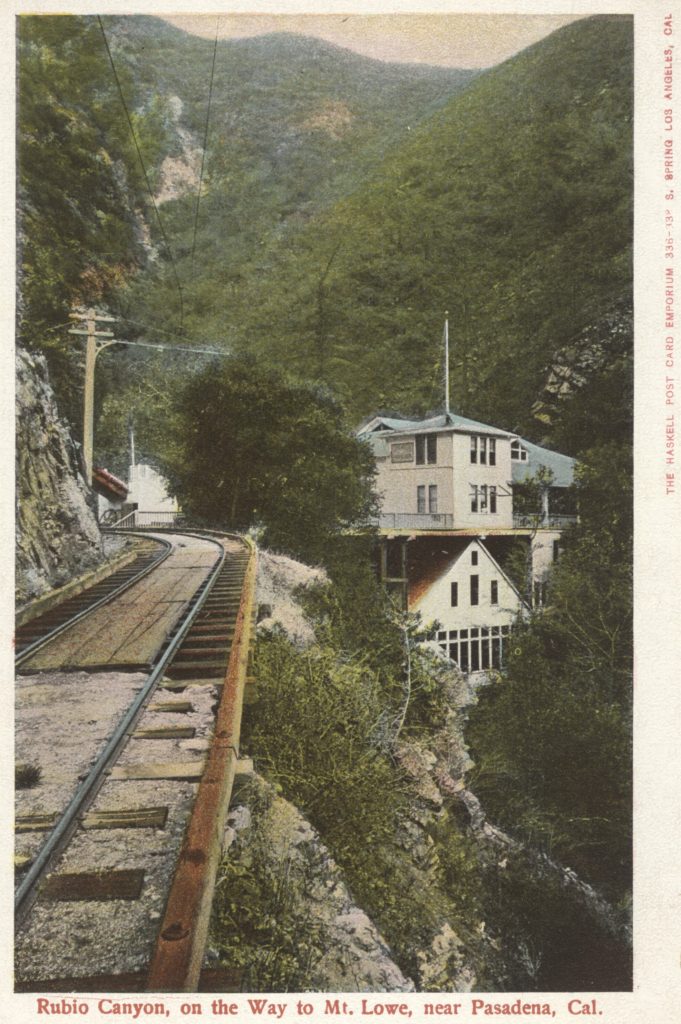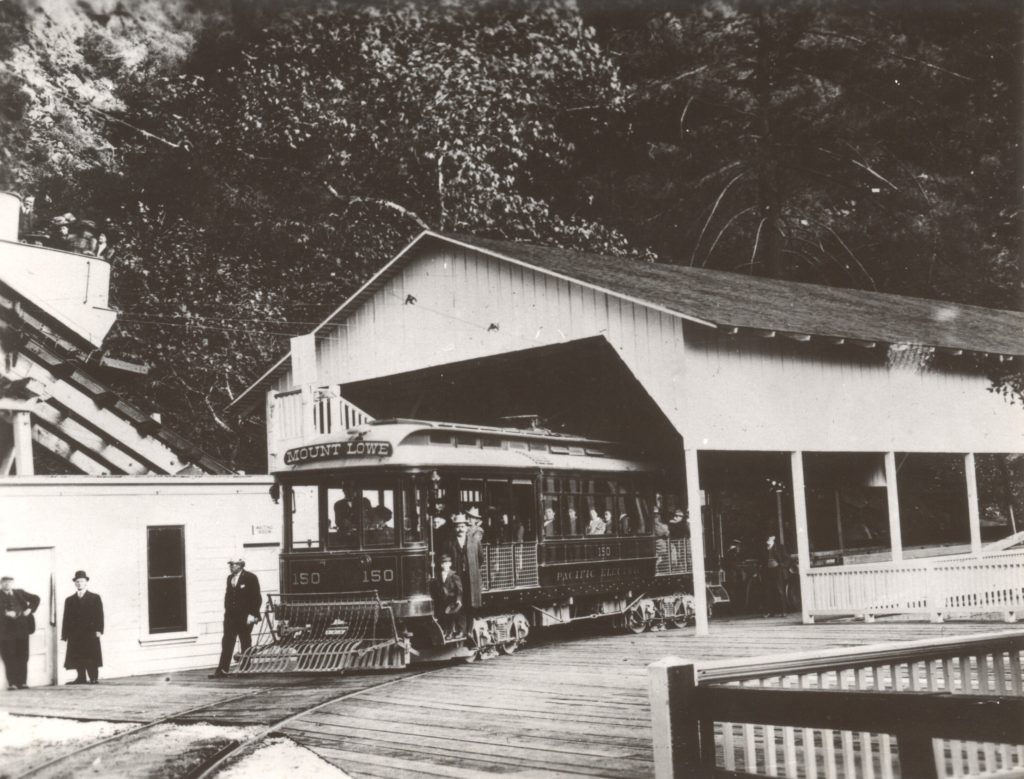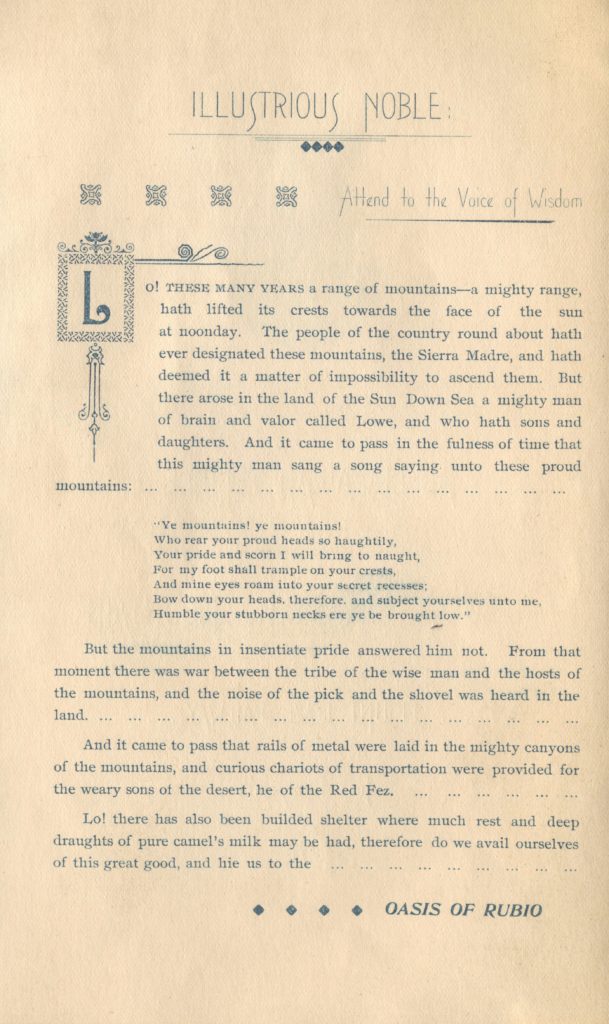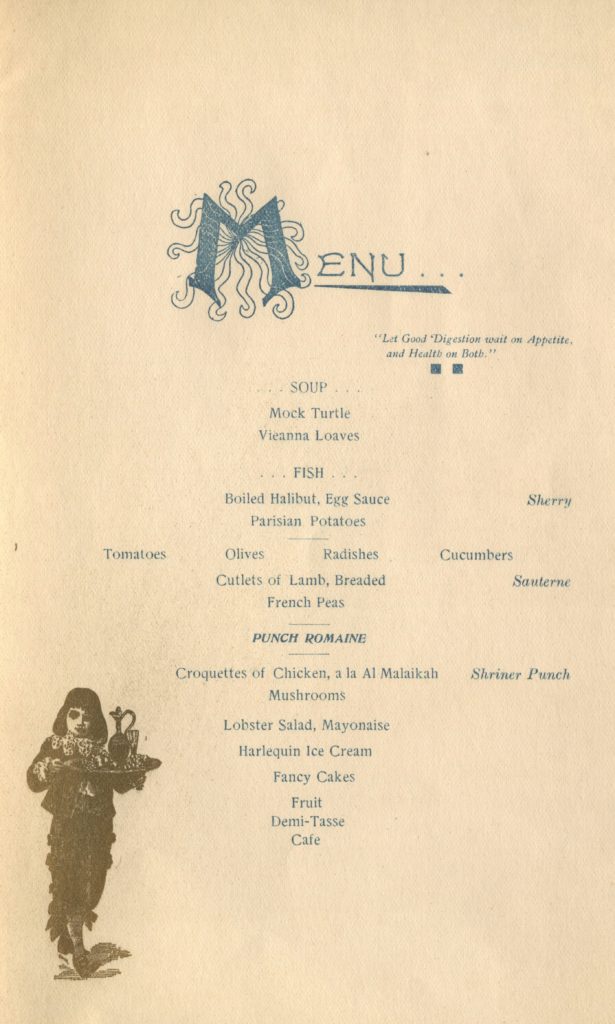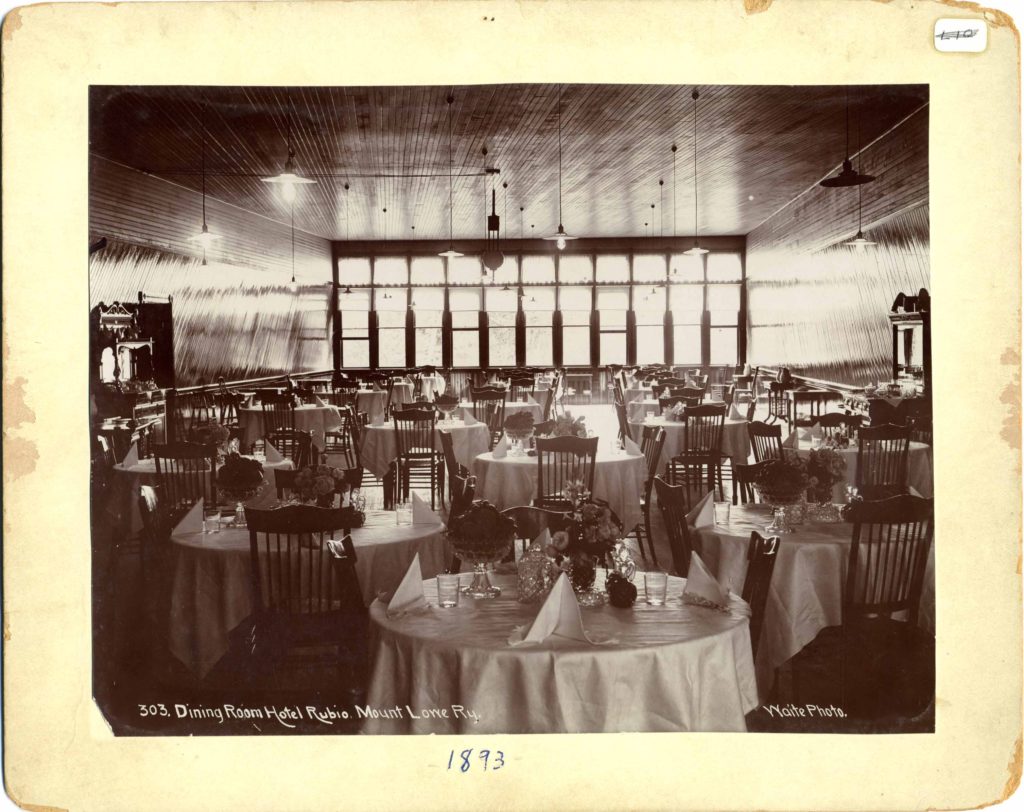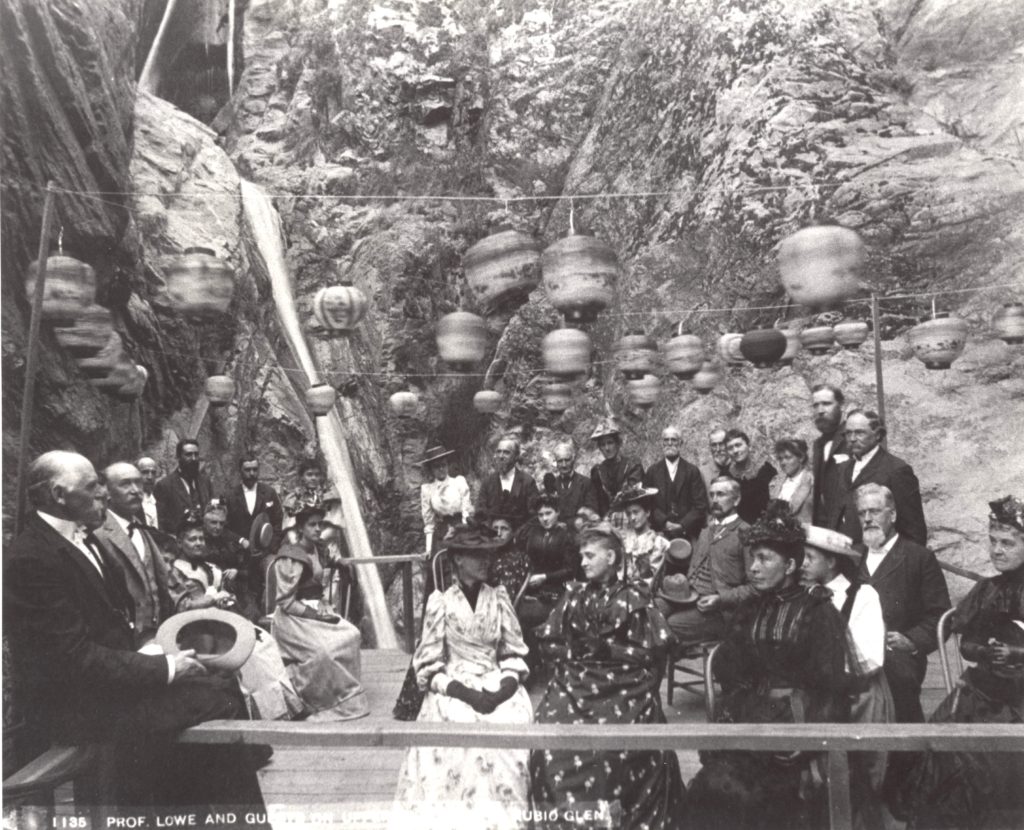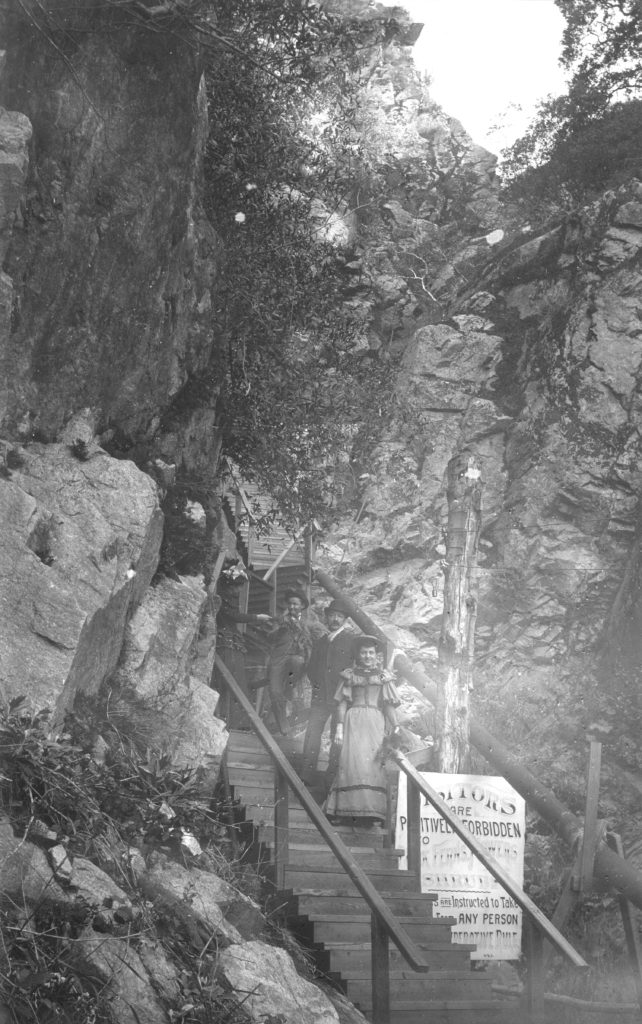The Rubio Pavilion Station foundation was completed by May of 1893 and after a short wait for lumber (over 400,000 board feet) coming by ship from Seattle, the station, pavilion, and a 12-room hotel were completed by opening day, July 4th. The station provided for the unloading and loading of passengers who were accessing the Mt. Lowe Incline and above, or, just having dinner at the Rubio Pavilion dining room below the platform. The Pavilion dining room looked like a house with its peak supporting the platform due to the unique construction challenges presented by the canyon. The kitchen was supplied with the freshest of produce from the numerous farms in Altadena (including Lowe’s own farm) below the canyon mouth. With seating for 80 and a finely decorated room, lit with the latest electric bulbs, dinner or lunch was a convenient train ride away for Pasadena or Los Angeles residents and tourists.
As the dining room and canyon pathways were only an hour’s train ride from Pasadena, guests would come up for dinner or lunch. The ambience was comfortably elegant in a Victorian setting, with wainscoted wooden walls, folded linen napkins and tablecloths graced with canyon flowers in a centerpiece vase on each table. Ample light shown in from the down-canyon, floor to ceiling windows, with the bright foothill sun reflecting the sycamore leaves and canyon shrubs in a greenish hue. After dining, on special occasions dances might be held at the pavilion in its large dining room, complete with live musicians and the latest of dance steps.
Professor Lowe directed that some of the lumber be used to allow visitors easier access to a series of waterfalls, cascades and pools further up Rubio Canyon. He built railed, wooden walkways and over 1,000 steps were required of the hearty tourist so see nine waterfalls, fern grottos, a suspended boulder and a mirror lake. The waterfalls ranged from a 9-foot drop at Cavity Chute Falls to over 110 feet at Thalehaha falls (native for “white water”). At nightfall, thousands of illuminated Japanese lanterns along pathways and about the pavilion lent a whimsical atmosphere to the pristine canyon as the professor’s vision began to take shape and his visitors and promoters raved about what he had built.
Once Echo Mountain House and Alpine Tavern opened, the Pavilion hotel and dining room no longer drew large crowds of visitors. The hotel and restaurant closed in 1903, and from then on, Rubio Pavilion was used solely as a transfer station. The pavilion was destroyed in 1909 and replaced by a car barn that housed the Incline cars.
